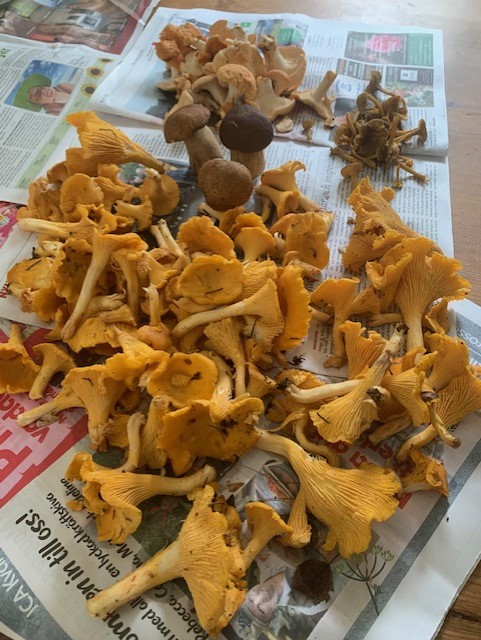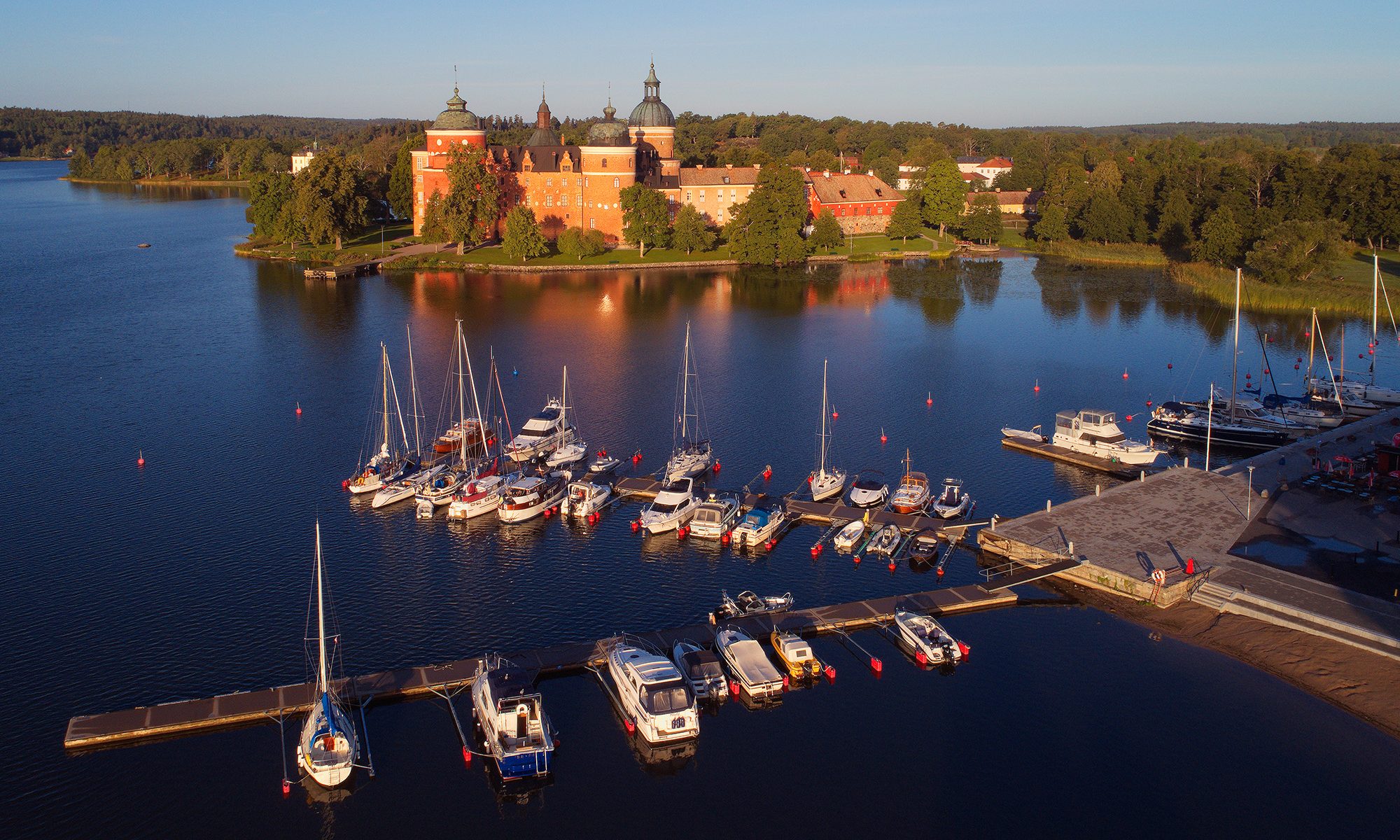Sue Whigham reflects on her natural findings on a recent trip to Sweden

Whilst I’d been warned that this year Sweden had been having a very wet summer, I hadn’t taken into account what might be the result of this in a country that is home to over 22,000 lakes, some of which are such large areas of water that they are known as ‘seas’.
I’ve been lucky enough to visit Sweden for many years now but this was the first year of ‘The Mosquito’. And unfortunately that was not the mosquito in the singular but in the hundreds of thousands! Oh, my goodness. They were everywhere and obviously hungry which we found to our cost. We are all used to getting a few bites on trips to hot countries but here the Swedish version surpassed anything we’d come across. Thank goodness though, this phenomenon is rare in Sweden and after a week they disappeared from whence they came and we regained our equilibrium. This came soon after a trip to the chemists in Mariefred only to be told that there had been a run on antihistamines and that they were waiting anxiously for further supplies to be delivered. Mariefred is on Lake Mälaran, which has the added attraction of the glorious and imposing Gripsholm Castle, owned by the Swedish Royal Family since the reign of King Gustav Vasa in the sixteenth century. And it was at least an opportunity to do a spot of shopping and have a delicious open prawn sandwich at our usual cafe on the corner with the black and white tiles and then have the bonus of a beautiful drive home on virtually car free roads – and completely pot hole free to boot.
Södermanland is a particularly lovely part of south central Sweden with a combination of rolling farmland and stands of mixed forests and of course, lakes. Many of the farms have absolutely huge barns all painted in a distinctive red known as Falu red, which originated from the Falun copper mine in central Sweden. I’d love to be in Sweden on the day that the cows are let out of the barns in the spring after a long, long winter. It is a day of celebration known as a ‘kosläpp’ when they come out skipping and jumping for joy to be out in the fresh air again. Their offspring will have, of course, been born in the barns and the farmer has to let the cows out separately from the calves so that the calves don’t get accidentally trampled by their over excited mothers. Once everything has calmed down a bit, the calves are then released. Interestingly cows have to be let out in the spring under Swedish animal welfare laws, which sounds good to me.
But back to the lake at the bottom of the garden where we were staying. Last year we heard and saw the cranes that flew overhead most mornings but this time we only heard them a couple of times. But the first swim came up trumps as an osprey, the national bird of the region, put in an appearance and I watched him swim low over the water for most of the length of the lake. He eventually landed somewhere beyond the reeds and I didn’t see him again. But what a spectacular bird with a wingspan of 1.5 metres – I hear that one was spotted at Rye Harbour recently too.
We also had the pleasure of spending an early evening with a couple of hares nonchalantly nibbling away on the grass outside the house at the same time as giving themselves a good groom. Luckily they didn’t spot us even when we were rather manically attempting to take a few rather blurred photos from the kitchen window. Imagine our consternation when we got back the following day and found a dead hare propped up on the verandah.
We thought that it must be one of ‘our’ hares but he’d been found during a chanterelle hunt in the nearby woods. Nothing wasted here as he ended up in a casserole in somebody’s else’s household the following day. Then there were the ‘sounds off’ coming from the forest. I thought at first it might be wild boar having seen signs of their excavations in the meadow down the lane but it was more likely to be some sort of deer as it sounded rather like a dog with a particularly sore throat.
The meadow that I found such interesting plants in last year had already been cut to be used for silage. But in the ditch dissecting the field there were still a few wisps of meadowsweet and later on that day my hostess gave me a tisane of dried meadowsweet (Filipendula ulmaria) to try. I’d read that it was not only used as a herbal medicine but due to its high concentration of salicylic acid was used to make aspirin. What a wonderful plant. It certainly seemed to help both with the irritating and numerous mosquito bites and one of those throats that seems to go with flying. Can’t wait for next summer and to collecting some from the ditch right outside the house here. Heaven knows why we haven’t done it before.
An hour’s exploration of the woods near the house revealed the most fantastic collection of fungi of all sorts and some wonderful lichen too
Just over half of Sweden (63%) is covered with forest and the right of public access known as ‘allemansrätten’ gives everyone the right to collect berries and mushrooms on public land as long as you do it responsibly and don’t take too much. An hour’s exploration of the woods near the house (in full improvised mozzie protection clothing!) revealed the most fantastic collection of fungi of all sorts and some wonderful lichen too. The forests here are ancient and dotted with huge granite boulders that were formed after the last Ice Age. Each one of these has its covering of mosses, ferns and lichens creating mini worlds perfect for a child’s imagination to run riot (let alone mine). I didn’t find many chanterelle, the forager’s favourite, but either someone had already passed through this patch or I just didn’t know where to look. Having said that, I did come across two or three here or there. It’s quite difficult to miss them as they are bright yellow or orange and very distinctive. They also smell of apricots. The interesting thing about chanterelle is that they are a mycorrhizal fungus which, over the years, form a symbiotic association with the trees they are growing with. This makes them very difficult to grow in cultivation. Known as the ‘gold of the forest’ they are a significant source of Vitamin D and of course, both free and 100% organic. I rather liked the look of the natty gadget in the kitchen department of the local supermarket with a little knife to cut and collect the chanterelles attached to a small brush to clean them off should they need it. I’m rather glad I didn’t buy one though as I think that in my case it might have been a bit under used!
Sue Whigham can be contacted on 07810 457948 for gardening advice and help in the sourcing and supply of interesting garden plants.
Image of Grispholm Castle by Roland Magnusson
You may also like
In the Night Garden
Jo Arnell explains how to make the most of your outdoor space once darkness falls Some enchanted evening you may see me outside – mainly searching for slugs in the garden, because the cool hours of night are when they...
Contain your excitement
Jen Stuart-Smith discusses how to get creative with your pots and planters My love affair with plants started with houseplants when I was a child. As my bedroom windowsill overflowed – resulting, occasionally, in waking up with compost under my...
More than just a pretty face
Jen Stuart-Smith explores the multiple uses of some easy-to-grow garden favourites When you grow flowers for their beauty, shape and colour it can be easy to forget all the other qualities they have to offer. Some are edible, others provide...










